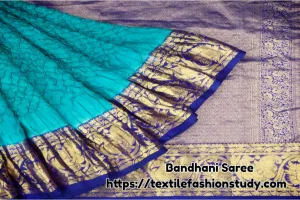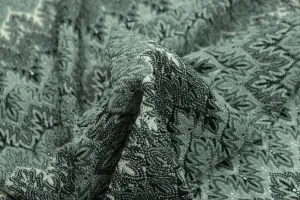Table of Contents
Textile and Clothing Manufacturing
Textiles are the second most basic human need after food. Day by day, the demand for textiles and clothing is increasing rapidly. However, in case you’re wondering, the oil industry tops the list of the world’s biggest polluters, with the textile and fashion industries coming in second. Moreover, the increase in throwaway fashion in modern society has increased the amount of fabric produced by 50% in the past few decades. The rise in population and the abundance of fashion labels have increased the demand for textiles even more. Due to the overuse of natural resources and the emission of extremely hazardous and poisonous materials, the results are catastrophic for our environment. There are numerous harmful environmental effects of the textile and garment industries. I’ve done my best to highlight key aspects in this post.

Environmental Impact of Textile and Clothing Manufacturing
Now I’d like to introduce the environmental impact of textile and clothing manufacturing. Textiles as the demand for premium clothing have grown. This rise in demand is due to a variety of factors. One explanation is that more people are seeking out apparel that is both fashionable and comfy. People also wish to avoid wearing clothing made from toxic materials as they become more health-conscious.
The industry that manufactures textiles and clothes has a variety of participants. Additionally, there are certain well-known companies whose goods are used by athletes all over the world. They produce a wide variety of clothes, including formal, casual, and even sporting ones.
The fact that many of the materials used to make textile and garment goods are hazardous to the environment is one of the industry’s main problems. For instance, cotton is a fairly eco-friendly material, but it is frequently utilized in apparel production due to its affordability. However, from cotton agriculture to clothing manufacturing, various kinds of chemicals are used. Chemical processing and various dyes are used to create the finished items.
Now I would like to present the various types of textile and clothing manufacturing and their environmental impacts. The production of textiles has a big effect on the environment. A significant amount of water, energy, and chemicals are used in the manufacture of textiles and garments. Additionally, a lot of greenhouse gases are released. The manufacture of textiles is one of the main causes of global warming. The garment manufacturer must know about textile manufacturing and its impact on the environment.
Ways to Reduce Environmental Impact
There are numerous strategies to lessen how the manufacture of textiles affects the environment. Utilizing more environmentally friendly technologies, recycling resources, and utilizing fewer chemicals are a few examples.
The environment can be greatly impacted by reducing the environmental impact of textile production. It can lower the energy, water, and greenhouse gas emissions that are used and emitted. Additionally, it might lessen the pollution produced during the textile manufacturing process.
One of the main causes of global warming is the production of textiles. We can contribute to slowing climate change by minimizing the environmental impact of the textile production process.
After that, there are different ways to reduce the environmental impact of textile and clothing manufacturing.
- Firstly, utilize sustainable or recycled resources while creating textiles.
- Secondly, use natural textiles and colors.
- Thirdly, reduce the amount of garbage generated.
- After that, employ energy-saving production techniques.
- Additionally, promote the use of environmentally friendly farming methods.
- Lastly, encourage the growth of environmentally friendly textile industries.
Suggestions for Further Environmental Impact Reduction
Finally, I’d like to make a few suggestions for further environmental impact reduction in the textile and apparel industries.
One of the industries that harm the environment the most is textile production. Producing textiles from scratch consumes a lot of water, energy, and frequently hazardous chemicals and colors.
The following are some of the main environmental issues with the production of textiles:
Water Use:
To grow the plants, prepare the materials, and dye the clothing, textile manufacturing needs a lot of water. For example, a manufacturer may use approximately 280 gallons of water to produce one shirt.
Energy Use:
The textile industry is one of the most energy-intensive industries. Growing the plants, processing the raw materials, and dying the clothing all demand a lot of energy. For instance, a factory might require about 760 kilowatt hours of energy to make one shirt.
Hazardous Chemicals:
To clean the equipment and dye the fabric, hazardous chemicals are frequently used in the textile industry. Both the environment and human health can be harmed by these pollutants.
Overall, the production of textiles and clothes has a major negative influence on the environment. Water and energy are both extensively used in the production of textiles and garments. The manufacture of textiles and garments harms the environment. The manufacture of textiles and apparel does affect the environment, but there are ways to lessen it. The producer of textiles and clothes must pay attention to the environment’s effects and produce their goods in a way that keeps the environment safe.





